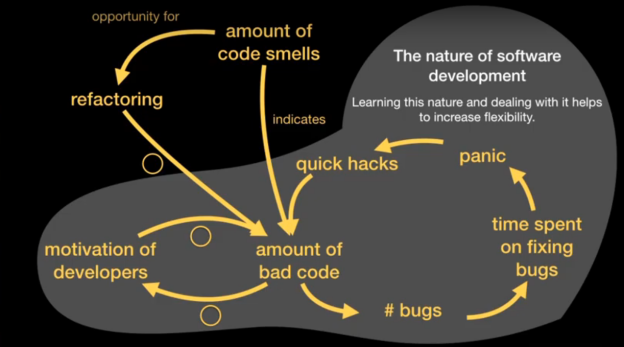For this week, I will be discussing about anti-patterns. I chose to talk about anti-patterns because it relates to one of the topics on our course syllabus, and it seems like it would be good for me to connect and refresh concepts learned in the previous blog posts to anti-patterns; for many of the design patterns and software concepts learned are used to prevent anti-patterns.
To supplement my knowledge on this topic, I watched two youtube videos and read one article on anti-patterns. The first video I watched was a very short video about a developer who introduces the concept, anti-patterns. In the video, he connects anti-patterns to code-smells and basically says that code-smells serve to indicate potential/likely problems in your code, which are the anti-patterns. The second video I chose was lengthier and was by the infamous ‘techlead’, where he satirically talks about his favorite anti-patterns he has seen in his work experience. Although satirical, I was able to decipher why anti-patterns are important to catch and also was able to learn some anti-patterns from his talk. The third source, the article served to list more formal definition and examples of anti-patterns. The article referred anti-patterns as “… a literary form that describes a commonly occurring solution to a problem that generates decidedly negative consequences”. The article also listed examples of anti-patterns that were similar to the ones discussed in the techlead video.
I chose these three sources in that particular order because the intro video helped me better understand the general picture of anti-patterns, whereas the satirical anti-pattern video and the formal anti-pattern article helped to give more depth and understanding of anti-patterns. The satirical anti-pattern video also included real-world examples from an experienced developer which were helpful as well.
From all three sources I was able to consolidate a better understanding of anti-patterns and can see how they connect to previous material learned in my college courses. An important argument that caught me in the techleads videos was the importance of preventing/catching anti-patterns. He explains that antipatterns are dangerous because they are often irreversible and extraordinary hard to refactor once they are embedded into the architecture or code-base, and over time the damage accrues. In addition the anti-pattern article explains that anti-patterns are important to catch early because it may become a bad habit which will repeat itself. Many of the anti-patterns noted both in the anti-pattern video and article, pointed out common code-smells which appeared to be unnecessary-complexity and obscurity; which exemplifies the need for simple and readable code. This is also a common theme noted in the previous blog posts as well. One of the anti-patterns that I can relate to is the over-usage of refactoring, which is explained as bad because it slows-down readability of code during a code-review; yet it is taught extensively in some CS institutions. Overall, this topic made me realize the importance of learning proper usage of software design techniques and concepts in order to prevent anti-patterns in our code.
Sources linked below
https://www.javacodegeeks.com/2011/10/programming-antipatterns.html
From the blog CS@Worcester – Will K Chan by celticcelery and used with permission of the author. All other rights reserved by the author.

